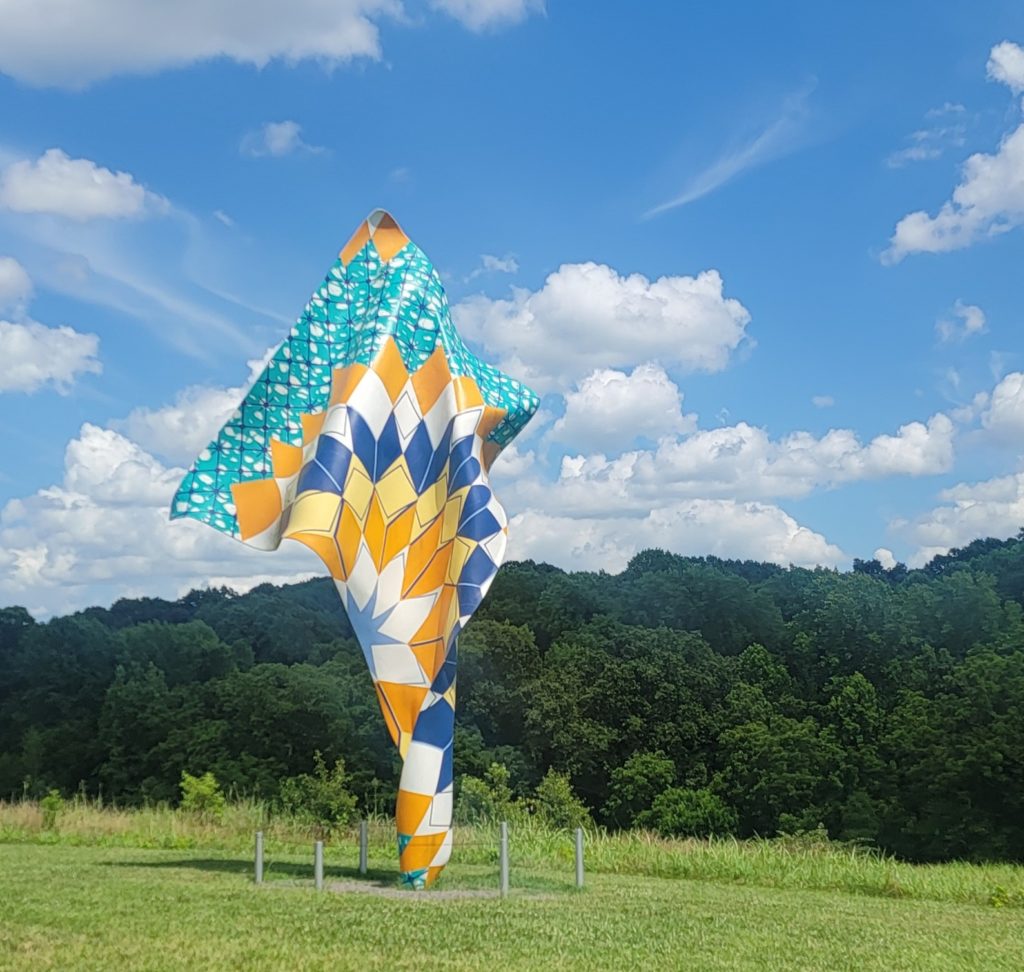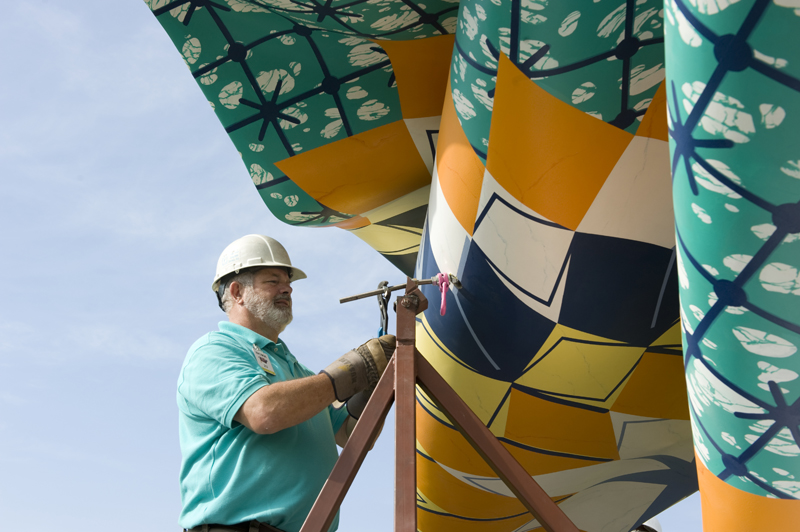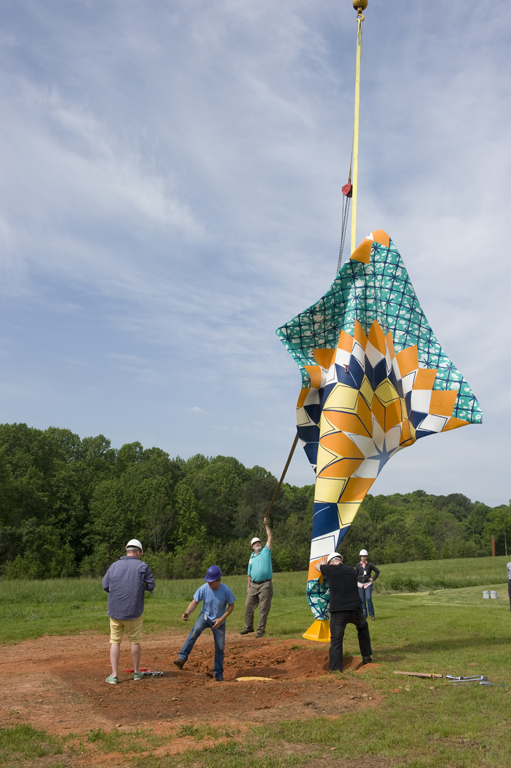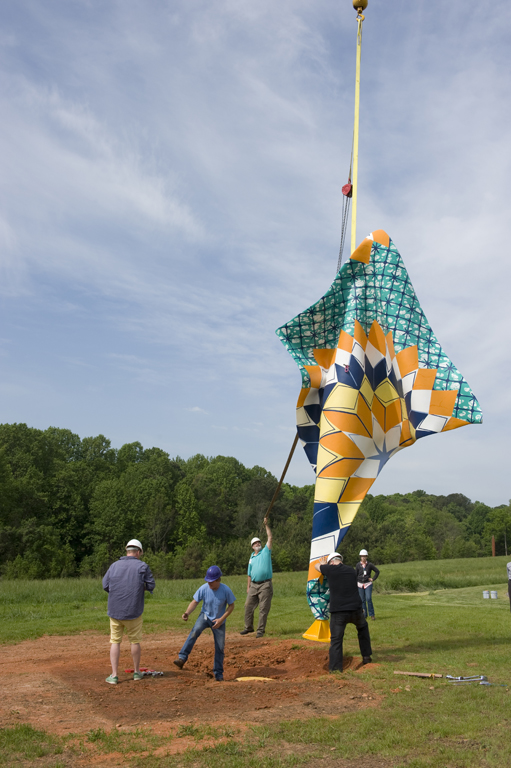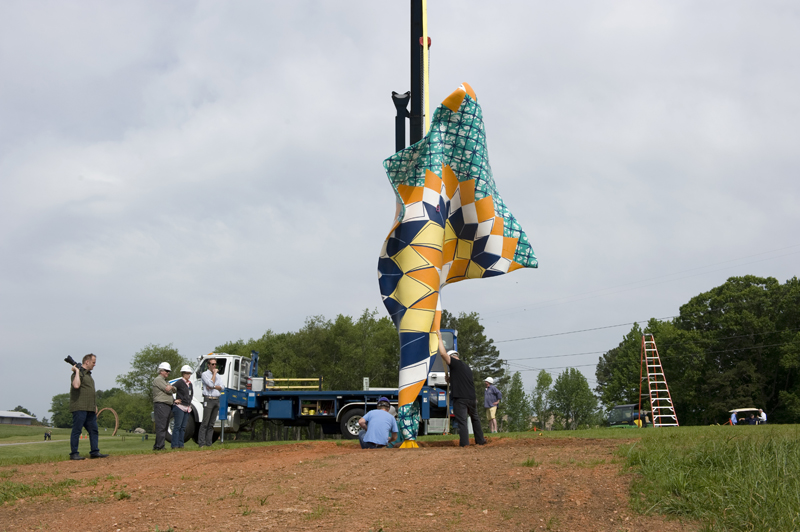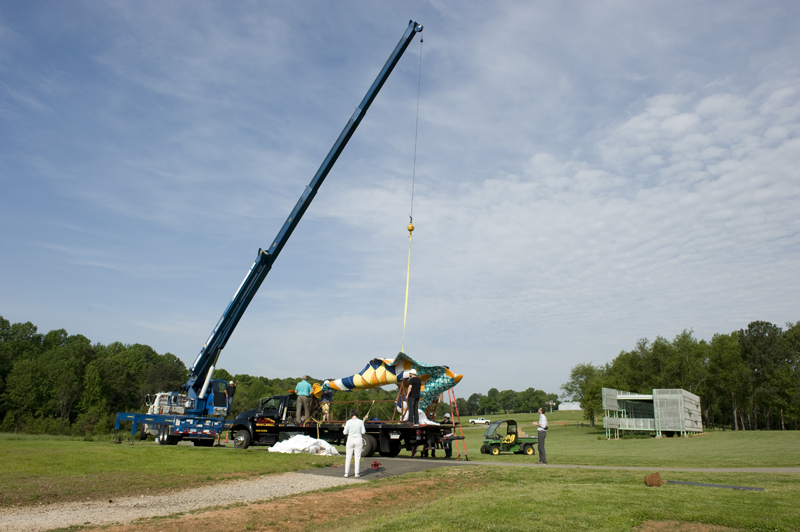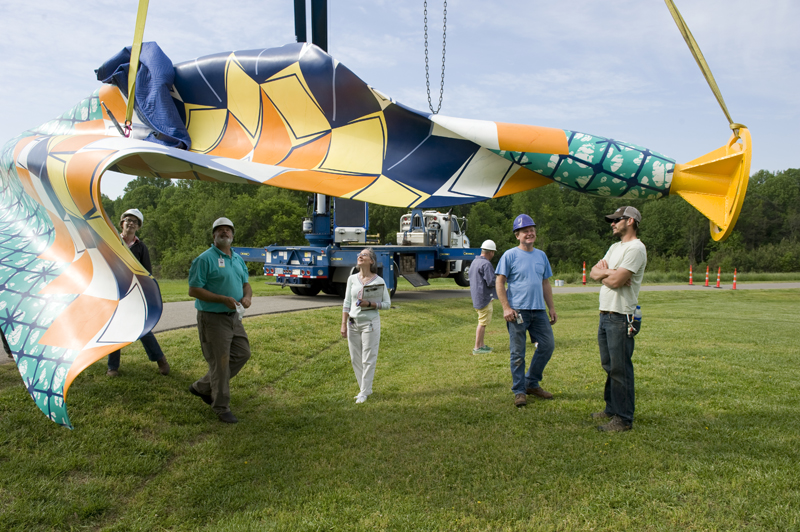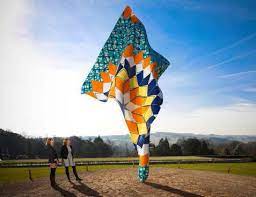Wind Sculpture II (work of art)
Artwork Info
Key Ideas about this Work of Art
- This sculpture is meant to look like a piece of Ankara fabric (also known as African wax print and Dutch wax-printed fabric) blowing in the wind. This style of fabric was first made in colonial Dutch Indonesia. It later became a symbol of African identity.
- Yinka Shonibare is a British-born Nigerian artist. He is known for his sculptural works that use colorful fabric patterns to explore cultural identity.
- The specific fabric patterns that Shonibare uses on his sculptures represent the combination of cultural identities of the African diaspora.
- Shonibare collaborates with a team of artists to build the sculptures that he designs.
- This work is part of a series of sculptures by Shonibare. His Wind Sculptures are displayed in public spaces all over the world.
Learn More
Wind Sculpture II is a 20-foot-tall, hand-painted fiberglass structure. It is intended to look like a piece of Ankara fabric blowing in the wind. This monumental sculpture’s flowing form and thin base make it appear to be weightless and flexible, but it is solid and heavy.
I wanted to defy gravity. To do something that actually looks soft, but it’s made out of hard materials, like fiberglass and metal.
Yinka Shonibare
Ankara fabrics are also known as African wax prints and Dutch wax-printed fabrics. They are vibrant, colorful textiles that were originally made in colonial Dutch Indonesia using a batik (wax-resist) dyeing technique. The fabric style was copied by the British and sold to West Africans. Despite its ties to colonialism, Ankara fabric became an important part of African culture, fashion, and identity.
Contemporary artist Yinka Shonibare was born in London, England, to Nigerian parents. He is known for his sculptural works and public art installations that use brightly colored and patterned fabrics to explore cultural identity. Shonibare’s artwork is not limited to sculpture and installations, however. He also works in film, photography, painting, and collage.
Wind Sculpture II is part of the artist’s Wind Sculpture series. The fabric patterns Shonibare uses on all of his Wind Sculptures represent the combination of cultural identities of the African diaspora, the worldwide dispersion of people from Africa as a result of the slave trade.
None of us have isolated identities anymore, and that’s a factor of globalization. I suppose I’m a direct product of that. The fabrics I use also look like they could be just African, because they are used a lot there. But what you see on the surface is not really what you always get. The fabric has a complicated history in its trade routes: It was originally designed as an Indonesian fabric, produced by the Dutch, and the British sold it into the African market. It’s a perfect metaphor for multilayered identities. In a way, my sculptures produce this volume. It’s most apparent in Wind Sculptures, which capture the wind to produce something tangible out of the intangible. The shape of the sails capture a moment, like how the headless sculptures portray a larger historical moment. The difference between them is that something as insignificant as a breeze is turned into something monumental, while a historical time period is made universally ambivalent. That’s significant. Ultimately, I’m trying to grasp living with more than one culture in my head.
Yinka Shonibare
Shonibare’s artistic process is largely collaborative. He first sketches the designs for his sculptures. Then he meets with other artists, including sculptors and costume makers, at his studio. They work together as a team to create the sculptures that he designs.
Since 2013 Shonibare’s Wind Sculptures have been exhibited in public parks in cities throughout the world. His Wind Sculpture VII is the first sculpture to be permanently installed in front of the Smithsonian National Museum of African Art in Washington, DC.
My work is about celebrating the diversity of communities and highlighting our connections.
Yinka Shonibare
tags: culture, environment, force, identity, movement, perception
Additional Resources
Resources for Teachers
- Watch a video about Shonibare and colonialism.
- Watch a video of the artist talking about his work.
- Watch a short documentary about the artist.
- Read an article about the history of Ankara fabric.
Resources for Students
- Read a short article and view a video about Shonibare.
- Watch a video to learn how wax-printed cloth is made.
- View another Wind Sculpture by this artist.

